History of Tutaev
13th Century
Foundation of Borisoglebskaya Sloboda
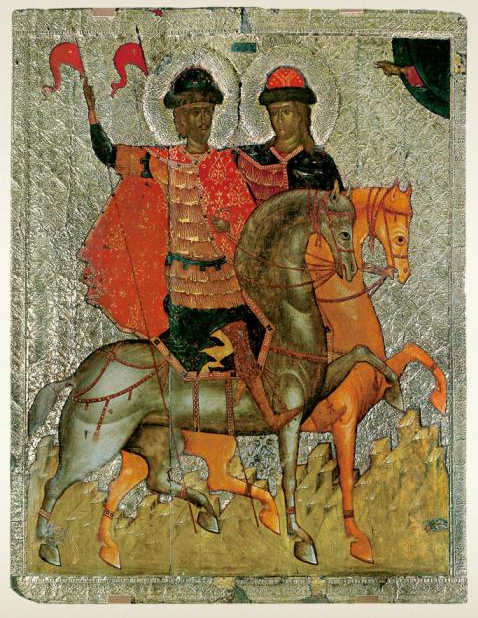 After the Mongol-Tatar Invasion of Rus in 1238, refugees fleeing Yaroslavl decided to settle in the heavily forested area on the bank of the River Volga which is now the right-bank side of Tutaev. They named their settlement the Borisoglebskaya Sloboda in honour of the Russian saintly princes Boris and Gleb.
After the Mongol-Tatar Invasion of Rus in 1238, refugees fleeing Yaroslavl decided to settle in the heavily forested area on the bank of the River Volga which is now the right-bank side of Tutaev. They named their settlement the Borisoglebskaya Sloboda in honour of the Russian saintly princes Boris and Gleb.
Foundation and Destruction of Romanov
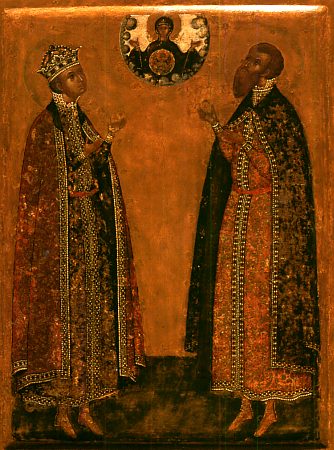 The present day city of Tutaev was originally two separate cities: on the left-bank of the Volga stood Romanov and on the right-bank Borisoglebsk. Romanov was founded in approximately 1283 by Prince Roman Vladimirovich of Uglich. However this original Romanov was later completely destroyed during a Mongol-Tatar raid.
The present day city of Tutaev was originally two separate cities: on the left-bank of the Volga stood Romanov and on the right-bank Borisoglebsk. Romanov was founded in approximately 1283 by Prince Roman Vladimirovich of Uglich. However this original Romanov was later completely destroyed during a Mongol-Tatar raid.
14th Century
Refoundation of Romanov
In 1345 Prince Roman Vasilievich, a son of Prince Vasili Davidovich Terrible Eyes of Yaroslavl, re-founded Romanov and made himself prince of Romanov. In the centre of the new city Roman Vasilievich has a palace built for himself as well as the original wooden version of the Exaltation of the Cross Church.
15th Century
Purchase of Romanov by Maria Yaroslavna
In mid-15th century, Maria Yaroslavna, the wife of Grand Prince Vasili II of Moscow, brought Romanov from the descendants of Prince Roman Vasilievich. The territory was then declared her own property by a decree of her husband in 1462. In 1468 Maria Yaroslavna order the construction of defences in the city. In 1472 she left Romanov to her son, Prince Andrey Vasilievich Bolshoy of Uglich, who incorporated it into the Uglich Principality. Andrey Bolshoy was arrested by his brother Grand Prince Ivan III in 1492 and he died in prison in 1493 and so Romanov along with the rest of the Uglich Principality was incorporated into the Moscow Grand Principality.
16th Century
Resettlement of Tatars in Romanov
In 1554 Bey Yusuf of the Nogai Horde was overthrown by his brother Ismail. After this event two other brothers, Ibragim and Il, along with other family members and members of their court left the Nogai Horde and entered the service of Tsar Ivan the Terrible of Russia. Tsar Ivan granted the Tatars the city of Romanov where they settled.
17th Century
Romanov during and after the Time of Troubles
I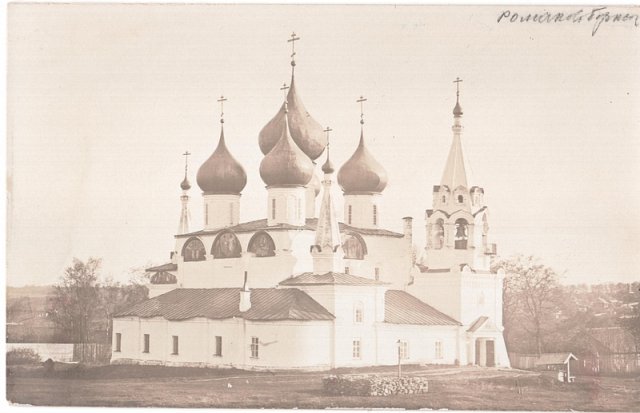 n 1609, during the period in Russian history known as the Time of Troubles, Romanov was sacked by Polish interventionists and its citizens also rose up against the occupation of this part of Russia by the Second False Dmitri. After the Time of Troubles Romanov recovered and developed. A series of new stone churches were built in the city, including a new stone version of the Exaltation of the Cross Cathedral which was completed in 1658 on the order of Metropolitan Iona Sysoevich of Rostov.
n 1609, during the period in Russian history known as the Time of Troubles, Romanov was sacked by Polish interventionists and its citizens also rose up against the occupation of this part of Russia by the Second False Dmitri. After the Time of Troubles Romanov recovered and developed. A series of new stone churches were built in the city, including a new stone version of the Exaltation of the Cross Cathedral which was completed in 1658 on the order of Metropolitan Iona Sysoevich of Rostov.
Borisoglebskaya Rybatskaya Sloboda
 Since the 15th century Borisoglebskaya Sloboda became known as the Borisoglebskaya Rybatskaya Sloboda (Borisoglebsky Fishing Settlement) and in the 16th century it was administered as part of the royal court in Moscow, which it provided with sturgeons. In the 17th century Tsar Alexis issued a decree prohibiting citizens from Romanov from fishing in the Volga around Borisoglebskaya Rybatskaya Sloboda. The first stone cathedral was built in the settlement between 1652 and 1670. However upon completion the Our Lady of Smolensk Cathedral collapsed. Immediately afterwards the Resurrection of Christ Church was built in its place. It was completed in 1678 and survives to this day.
Since the 15th century Borisoglebskaya Sloboda became known as the Borisoglebskaya Rybatskaya Sloboda (Borisoglebsky Fishing Settlement) and in the 16th century it was administered as part of the royal court in Moscow, which it provided with sturgeons. In the 17th century Tsar Alexis issued a decree prohibiting citizens from Romanov from fishing in the Volga around Borisoglebskaya Rybatskaya Sloboda. The first stone cathedral was built in the settlement between 1652 and 1670. However upon completion the Our Lady of Smolensk Cathedral collapsed. Immediately afterwards the Resurrection of Christ Church was built in its place. It was completed in 1678 and survives to this day.
18th Century
Administrative Reform
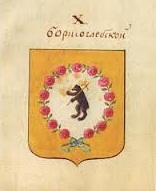 In 1760 Romanov's Tatars were ordered by a governmental decree to adopt Orthodoxy. All those that refused to convert were forced to leave the city to be resettled in a village outside Kostroma. In the following years all of Romanov's mosques were demolished. In 1777 the Borisoglebsky Sloboda was merged with neighbouring villages to form the city of Borisoglebsk. Both Romanov and Borisoglebsk became administrative centres within the Yaroslavl Viceroyalty which was formed in the same year. In 1778 the two cities were granted coat of arms - Romanov's depicted the River Volga flowing diagonally across the cenret, while Borisoglebsk's featured the Yaroslavl bear inside of ring of roses. New regulated plans were also drawn up for the cities. In 1796 the Yaroslavl Viceroyalty became the Yaroslavl Governorate.
In 1760 Romanov's Tatars were ordered by a governmental decree to adopt Orthodoxy. All those that refused to convert were forced to leave the city to be resettled in a village outside Kostroma. In the following years all of Romanov's mosques were demolished. In 1777 the Borisoglebsky Sloboda was merged with neighbouring villages to form the city of Borisoglebsk. Both Romanov and Borisoglebsk became administrative centres within the Yaroslavl Viceroyalty which was formed in the same year. In 1778 the two cities were granted coat of arms - Romanov's depicted the River Volga flowing diagonally across the cenret, while Borisoglebsk's featured the Yaroslavl bear inside of ring of roses. New regulated plans were also drawn up for the cities. In 1796 the Yaroslavl Viceroyalty became the Yaroslavl Governorate.
19th Century
Romanov Sheep
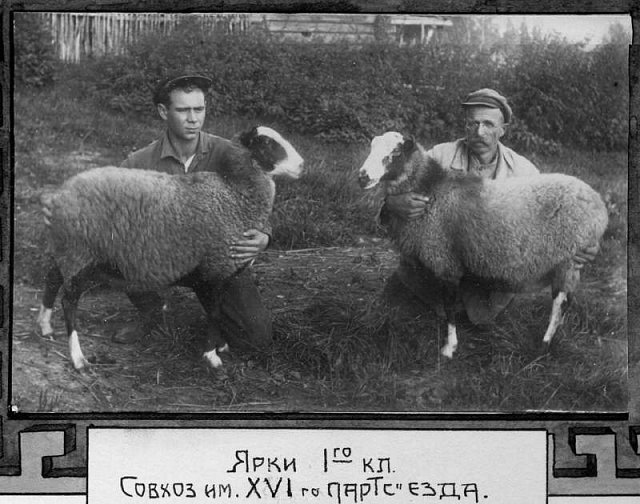 In 1802 outside interest was first shown to the pure breed of sheep from Romanov and the Upper Volga Region which became known as Romanov sheep. The sheep were prized for both their thick grey-black wool and for their fertility and prolificacy, as they reach sexual maturity early and can give birth twice a year with two to six lambs in each litter. This prolificacy is retained even in crossbred lambs. Soon after the sheep's potential for wool and meat production was realised, breeding pairs were exported to Western Europe and eventually to North America in the 20th century.
In 1802 outside interest was first shown to the pure breed of sheep from Romanov and the Upper Volga Region which became known as Romanov sheep. The sheep were prized for both their thick grey-black wool and for their fertility and prolificacy, as they reach sexual maturity early and can give birth twice a year with two to six lambs in each litter. This prolificacy is retained even in crossbred lambs. Soon after the sheep's potential for wool and meat production was realised, breeding pairs were exported to Western Europe and eventually to North America in the 20th century.
Romanov-Borisoglebsk
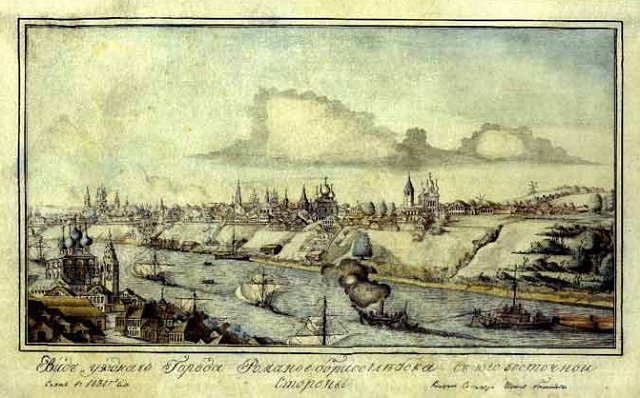 In 1822 Emperor Alexander I issued a decree under which the two cities of Romanov and Borisoglebsk were merged and the new city became known as Romanov-Borisoglebsk. At the same time the Romanov and Borisoglebsk Districts and even the two coat of arms were also merged. The proximity to the large city of Yaroslavl meant that Romanov-Borisoglebsk was overlooked in terms of industrial development, although linen factories were set up in the city.
In 1822 Emperor Alexander I issued a decree under which the two cities of Romanov and Borisoglebsk were merged and the new city became known as Romanov-Borisoglebsk. At the same time the Romanov and Borisoglebsk Districts and even the two coat of arms were also merged. The proximity to the large city of Yaroslavl meant that Romanov-Borisoglebsk was overlooked in terms of industrial development, although linen factories were set up in the city.
20th Century
Ilia Tutaev
 In the summer of 1918, a 20-year old man called Ilia Tutaev joined a recently-formed Red Army detachment in Romanov-Borisoglebsky. Upon receiving news that White Army officers were hiding out at a local dacha owned by the head of the city administration of Yaroslavl, where a White rebellion had broken out, Tutaev and his small group set off by boat to investigate. The details of what happened when they arrived at the dacha are confusing and contradictory, but what is known is that gunfire broke out and Tutaev was killed. In November 1918, when a discussion came up as to how the city should be renamed (after all Romanov-Borisoglebsk is associated with three saintly princes and even includes the name of the former dynasty), it was decided to call it Tutaev in honour of Ilia Tutaev who died bravely trying to defend the Bolshevik Revolution. Since the fall of the Soviet Union there have been calls to return the name of Romanov-Borisoglebsk to the city but no official renaming has taken place yet, although the old name is often used informally.
In the summer of 1918, a 20-year old man called Ilia Tutaev joined a recently-formed Red Army detachment in Romanov-Borisoglebsky. Upon receiving news that White Army officers were hiding out at a local dacha owned by the head of the city administration of Yaroslavl, where a White rebellion had broken out, Tutaev and his small group set off by boat to investigate. The details of what happened when they arrived at the dacha are confusing and contradictory, but what is known is that gunfire broke out and Tutaev was killed. In November 1918, when a discussion came up as to how the city should be renamed (after all Romanov-Borisoglebsk is associated with three saintly princes and even includes the name of the former dynasty), it was decided to call it Tutaev in honour of Ilia Tutaev who died bravely trying to defend the Bolshevik Revolution. Since the fall of the Soviet Union there have been calls to return the name of Romanov-Borisoglebsk to the city but no official renaming has taken place yet, although the old name is often used informally.
21st Century
Historical City
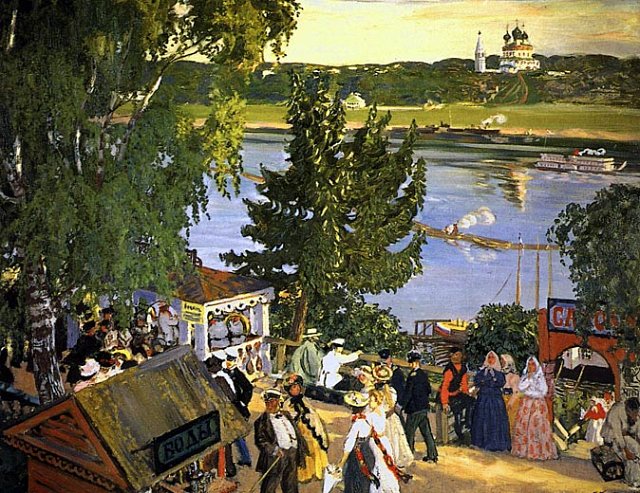 No railway station was ever built in Tutaev and no bridge was built linking the two sides. In addition the Second World War left Tutaev relatively untouched and although the majority of Tutaev's church were closed during the Soviet Union, most of them did survive and have since been restored. All of this has meant that the city has remained a quaint provincial city whose 17th, 18th and 19th century architecture has been preserved. In 2010 this fact was recognised when Tutaev kept its place on the drastically reduced list of Historical Cities of Russia. The city is also included as a secondary city of the Golden Ring tourist-route.
No railway station was ever built in Tutaev and no bridge was built linking the two sides. In addition the Second World War left Tutaev relatively untouched and although the majority of Tutaev's church were closed during the Soviet Union, most of them did survive and have since been restored. All of this has meant that the city has remained a quaint provincial city whose 17th, 18th and 19th century architecture has been preserved. In 2010 this fact was recognised when Tutaev kept its place on the drastically reduced list of Historical Cities of Russia. The city is also included as a secondary city of the Golden Ring tourist-route.

 History
History